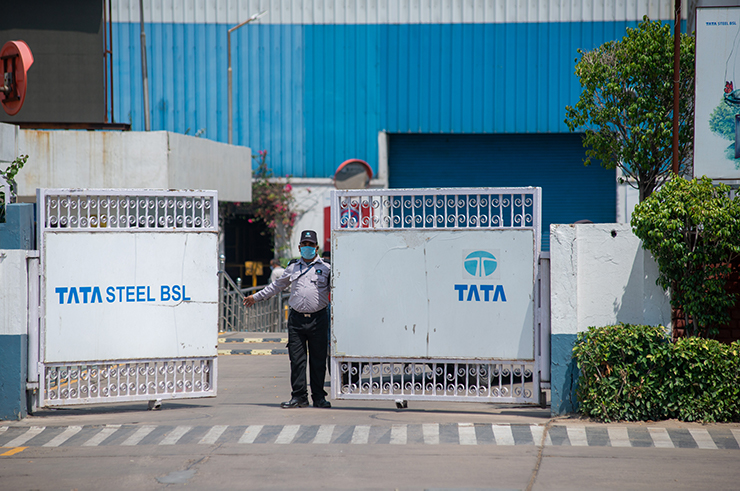Shift, Shake or Shock? Lessons for Taiwan investment in India

Source:Shutterstock
Taiwan businesses like Foxconn and Wistron have seen labor protests at their factories in India. How can Taiwan companies handle the “Indian shift” ?
Views
Shift, Shake or Shock? Lessons for Taiwan investment in India
By Arpita Duttaweb only
Two consecutive labor protests in Indian factories owned by Taiwan’s tech giants aroused considerable concern on how to handle the “Indian shift.”
The first two decades of the twenty-first century began with the India-Taiwan investment regime, which encouraged Taiwanese companies to consider setting up factories in India for a fertile environment and ample opportunities.
This “Indian shift” does bring back lucrative returns. On the other side, however, Taiwanese firms and executives have also been struggling to adapt themselves to various differences. In January this year, Foxconn’s production base in Chennai witnessed a labor strike for inferior food safety and accommodation standards. And about a year ago, Taiwanese company Wistron’s wage payment dispute also led to labor unrest in Bengaluru.
Analyses in news reports indicate that these labor uprisings are a simple reflection of Indian culture, and this culture shock has become the biggest concern for Taiwanese entities to rethink before further expansion in this sub-continent.
These consecutive disputes bring to the surface some hidden questions as to
(1) whether India is ready yet to welcome more FDI;
(2) Are Indian white collar work cultures, labor unions, and 3rd party contractors adequately handling the procedure; and
(3) Does the nation’s disputed mitigation capability meet international standards?
Simultaneously, Taiwanese companies also need to analyze patiently whether these confrontations are rooted in cultural differences and language barriers or operational and strategic disputes.
Further, it would be important to evaluate some of the critical factors; for example, some of the conglomerates in India have an average of 100,000+ employees, and even some companies, such as Tata, are running in India with 800,000+ employees for over 150 years. Despite the size of the company, Tata’s high employee satisfaction rate can be an aphorism to Taiwanese companies to believe that labor issues can be mitigated via adequate and empathetic managerial power distribution.
 (Source: Shutterstock)
(Source: Shutterstock)
Further, it is worth noting that Japan and Taiwan are, to some extent, similar in cultural aspects. The fact that India is home to 3,000 Japanese companies can be a clear signal that India could indeed provide a sustainable business environment to Taiwanese companies too.
Indian business analytics have observed that the basic engagement model of temporary workers is the most common factor for labor disputes in India. Therefore, it is urged that companies must have due diligence programs to scrutinize the current reputation of the third-party contractors. This can help company keep away from troublesome third-party contractors, and protect its age-old brand reputation from being tarnished in a new destination. This pre-hiring legal tool is obviously an important shield against potential disputes.
In addition, company must understand clearly the terms of “third-party contractors’ agreements” which must ensure the third-party contractors’ compliance with applicable labor laws of India. Liability for non-compliance by third-party contractors and indemnification clauses should also be elaborated in written contracts in a well-organized manner.
Since a company, rather than its third-party contractors, is the principal employer, therefore all liabilities shall be borne by the parent company only. It would be a company’s preliminary responsibility to monitor payment mode, wages, contract terms, dues, employment expiry dates, etc.
Employers should understand that workers usually protest to improve workplace culture, and labor unrest is a reflection of accumulated frustration and anger. Therefore, companies must create a transparent contact window to understand and mitigate problems at an initial stage.
A whistle-blowing mechanism and attentive vigilance can also be implemented to ensure harmony in the workplace. In addition, the 2020 labor unrest unveiled that Wistron’s rapid expansion of employment (from 2,000 to 8,500 employees in a year) was not well controlled by limited managerial personnel. Therefore, companies must ensure that they have enough managerial capacity before rapid expansion.
It is to be further noted that Chennai and Bangalore, cities associated with recent labor disputes, are not offbeat destinations to global investors; they have created a home for many high-tech Multinational Companies (MNCs).
In the end, I would like to conclude that Taiwanese companies are not that well-known in Indian daily life. However, with time, Taiwanese companies can achieve great reputations in the Indian market, which will act as a shield for their businesses.
Reputation is the only output that can bring sustainable business impacts. This crucial note is indeed necessary to preserve the expected outcome from any foreign venture.
About the author:

Arpita Dutta is a legal consultant at ‘Louis International Patent Office’, ‘Louis & Charles's Attorneys at Law’ and ‘STARBOARD Incubator’. Her background has been civil and corporate laws in India. In Taiwan, she has been providing legal support in seasoned industries for corporate and IP disputes and the investors for their intended ventures in India and Taiwan. She is a guest lecturer at National Taipei University of Technology and Chang Gung University.
Have you read?
♦ Puppetry and cultural diplomacy: Lifting Asian traditions under New Southbound Policy
♦ World Economic Forum: India’s Cooling Challenge
Uploaded by Penny Chiang






